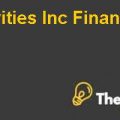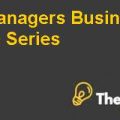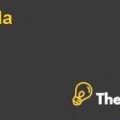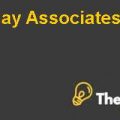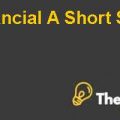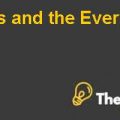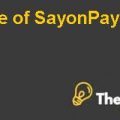
Problem 2
In the part Aof problem 2, the expected return is calculated. Expected return gives the center point of distribution with the help of expected return mean point is calculated for different variables.The positive expected return of variables encourages the investor to invest in the project (Graham, 2011).
It is calculated by multiplying the expected probability with respective outcomes for the period. It is not a hard and fast rule to accept the projects,as it just provide the average return for the period. Such as in this problem, each expected outcome is multiplied by the expected probability of each outcome. By adding the values of complete year expected return for the period is calculated.
It gives the figure of average return for the complete period for which the return is calculated. Therefore, it is expected that the expected return for the period will be 32.5%. Mostly outcomes are expected to generate negative value, how ever the final value of the period is generating positive value with the maximum probability, which why it is generating positive value of the expected return for the period.
In the part B of problem 2, the standard deviation is calculated for the expected returns during a period. Standard deviation gives the value of variation or dispersion of different variables. In that case,it is expected that the standard deviation value of these outcomes will be 54%. It means that there is a 54% probability of variation in the outcomes for the period.
Problem 6
In the problem 6, the expected return for the investment in Boeing stock is calculated for the year 2008 to 2009 and 2011 to 2012. It is expected that the dividend received by the shareholders will be reinvested in the company and hence, their total number of shares will increase on each dividend received.
In the year 2008, the shareholders received 0.4 dividends in different months. It is assumed the value of shares of a shareholder is 100 shares. Therefore,the amount of the dividend will be multiplied by the number of shares to calculate the total dividend income.
This dividend income is expected to reinvest again in the company for the purchase of further shares, hence their value of shares and the value of equity will increase with reinvesting. In order to calculate the expected return on investment including the dividend income,which is reinvested into the stock, it is calculated by subtracting the year’s start value with the existing value of the equity and dividing by the year’s start value (Baker, 2009).
It is expected that from the year the 2008 to 2009 January, the portfolio A will generate negative returns because of the reduction in share price and its total value will decrease by 87%.
However,in the case of stock B the dividend amount of 0.42 dollars is reinvested again in the stock and its share price in the end of January is greater that the base year’s price, therefore stock Bis generating overall 13% expected return during the given period.
Problem 27
In the first part of the problem 27,it is calculated that which strategy is yielding highest final payoff. In strategy A, it is expected that half of the stock will be invested at a risk free rate, which is 5% and half is invested at market rate which could 40% or -20%. In that case, half of the investment will generate 5% risk free return. It will generate 5% in any case whether the conditions are favorable or not.
In strategy A, it is supposed that the total investment is 100,000 dollar. 50,000 dollars will generate a 5 % return and is expected that the remaining 505 will generate 40%. The expected return is calculated for strategy A is 45000 dollar with a 24.74 percentage of standard deviation, it means that there is a chance that the return through this strategy will devote approximately 25% above or below.
However,in strategy 2,the investment is invested at market rate. It is expected that in the year 1, it will generate 40 % return and in the year 2, it will generate -20% returns. By incorporating the both values, strategy Bis generating overall 20,000 dollars with a percentage of 42.43 of the standard deviation. This indicates that there is a chance that the returns through strategy B could vary by 42.43% above or below from the expected returns.
Strategy B has the highest percentage of standard deviation. Holding stocks for longer time in strategy A is less risky because 50% of the investment will generate a secure return, how ever in strategy B the holding stocks for a longer period is much riskier because all the investment invests in market rate stocks, they could deviate the stock value with 42.43% in both ways......................
This is just a sample partial case solution. Please place the order on the website to order your own originally done case solution.

